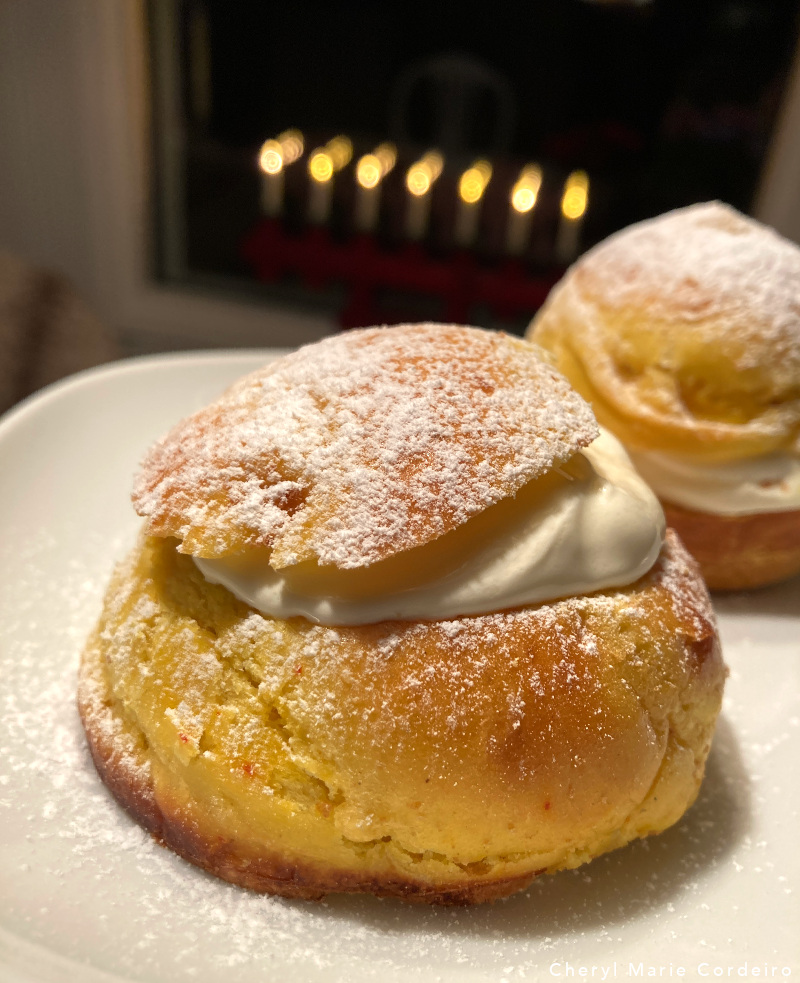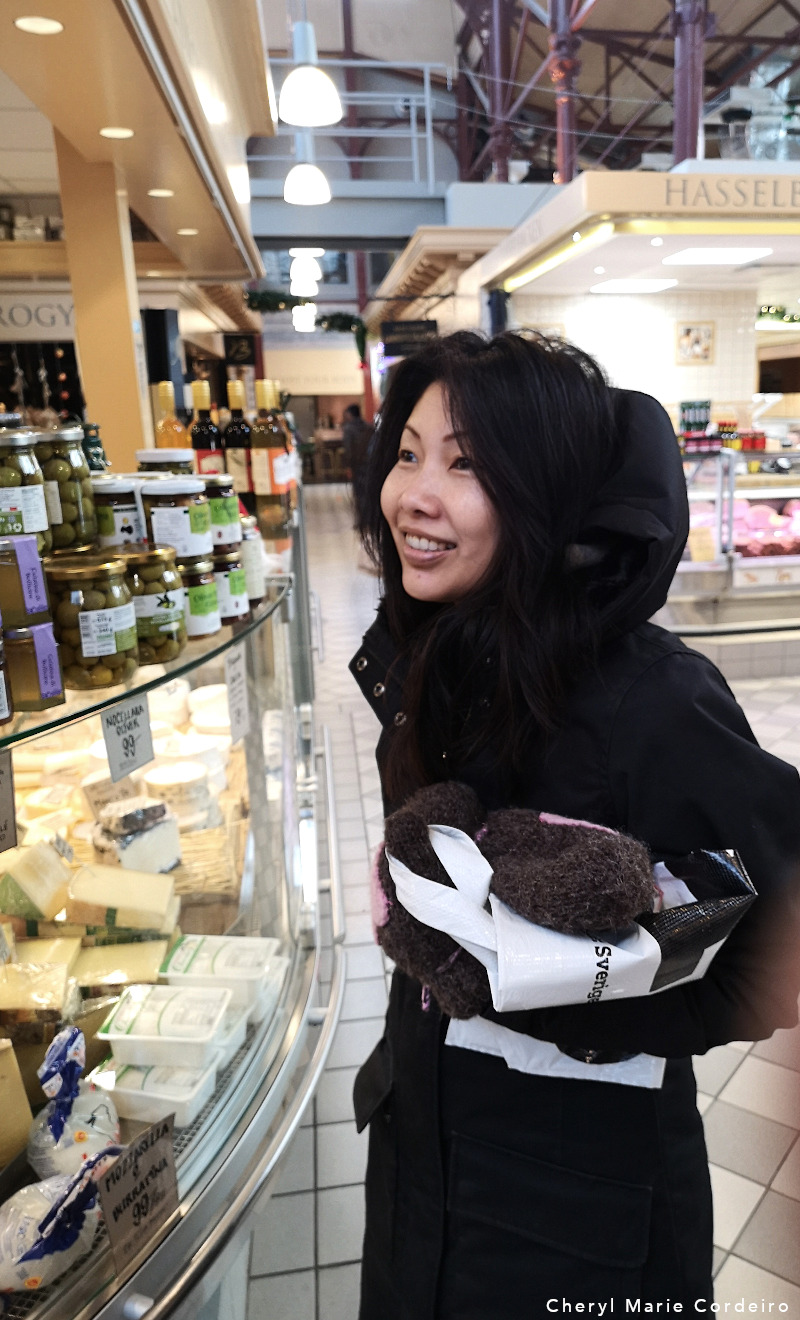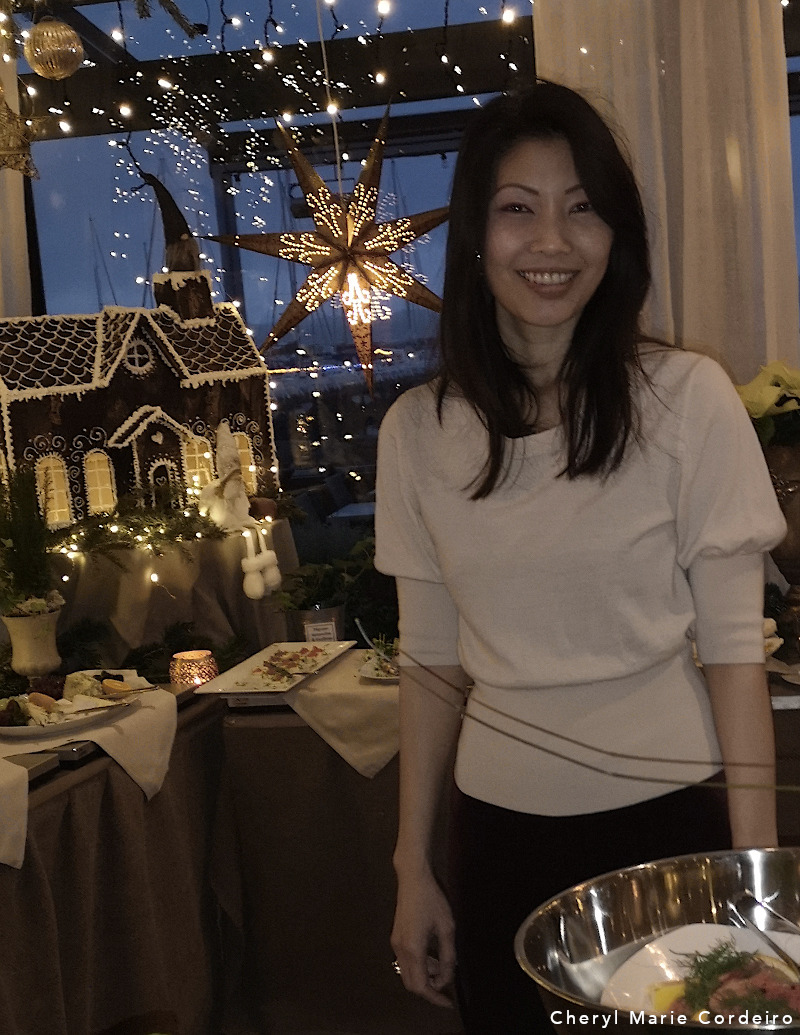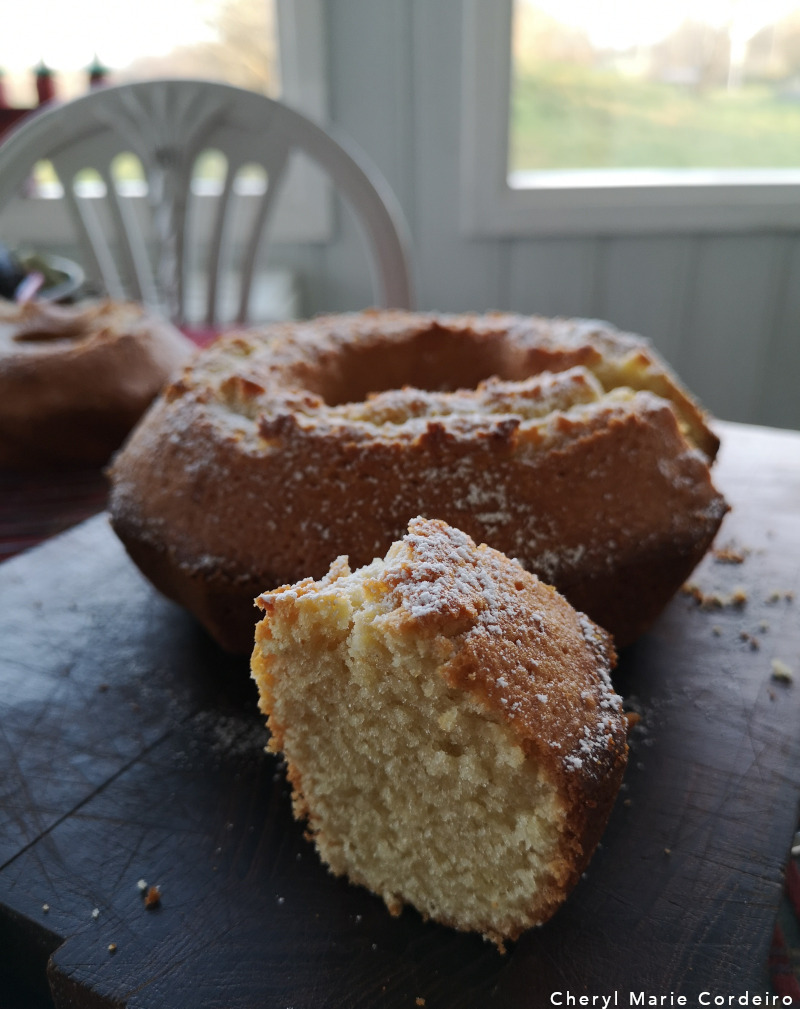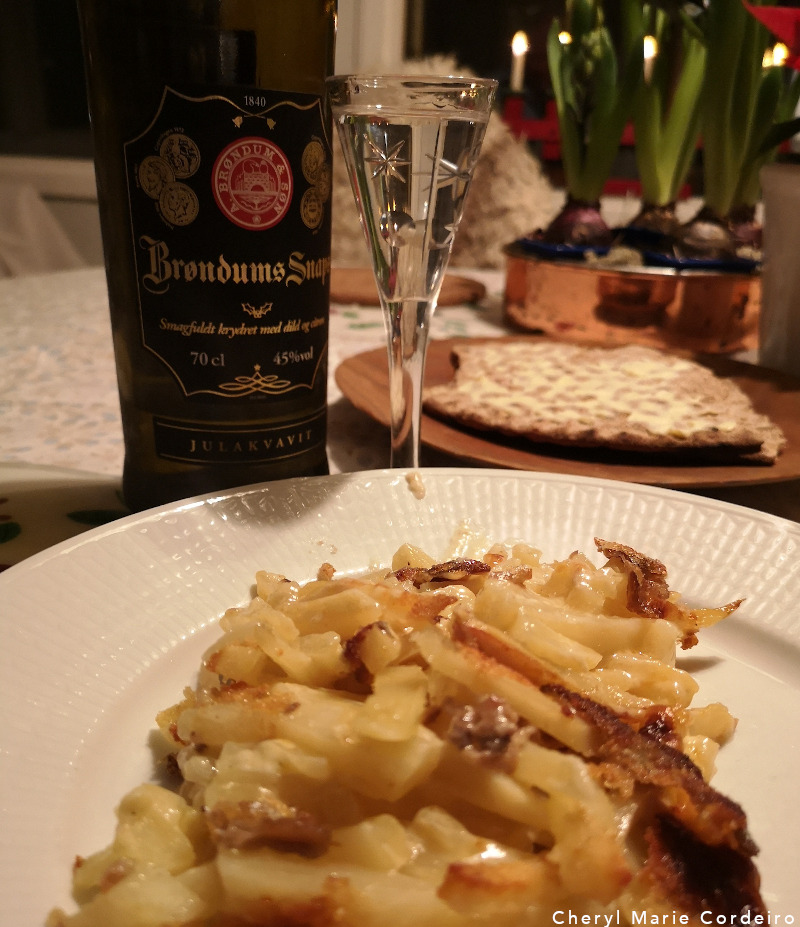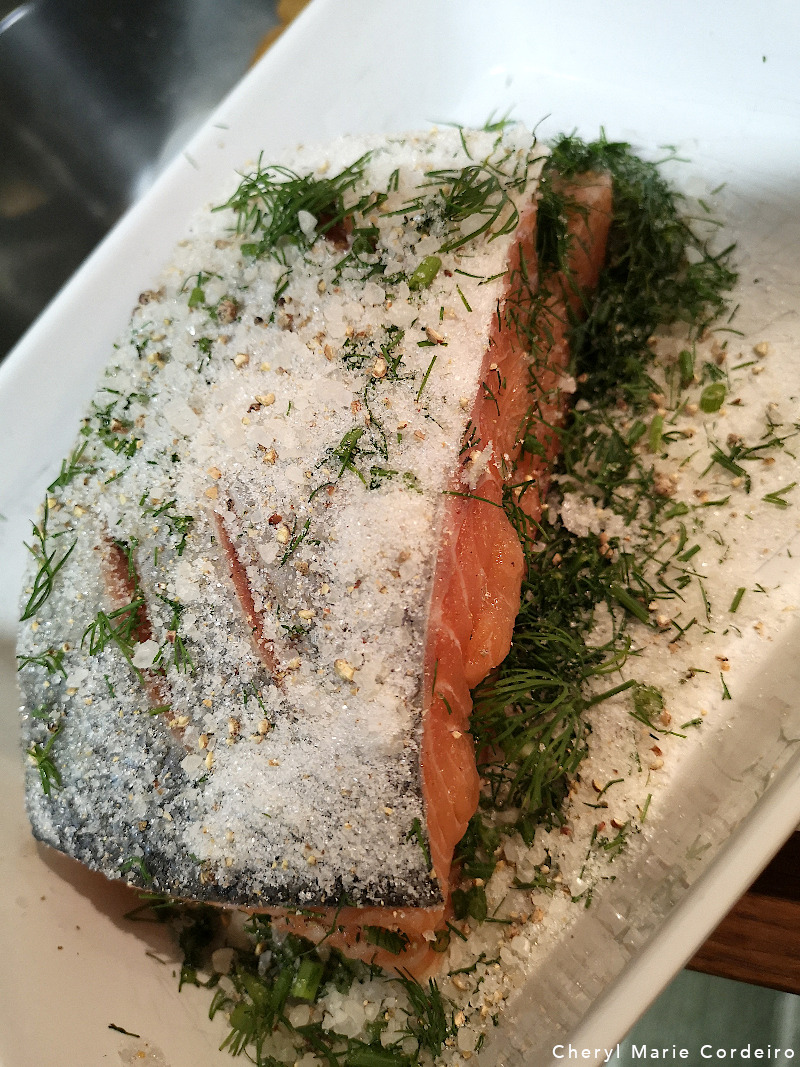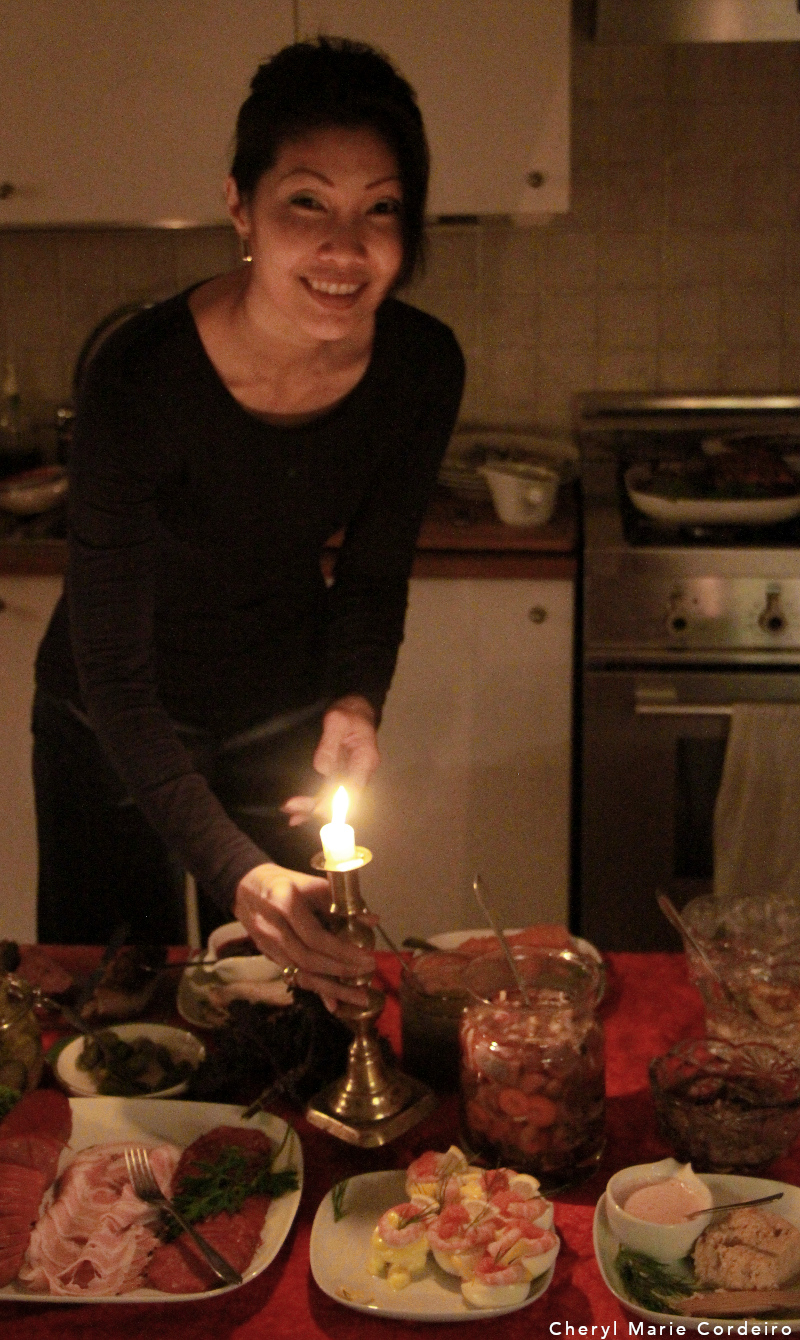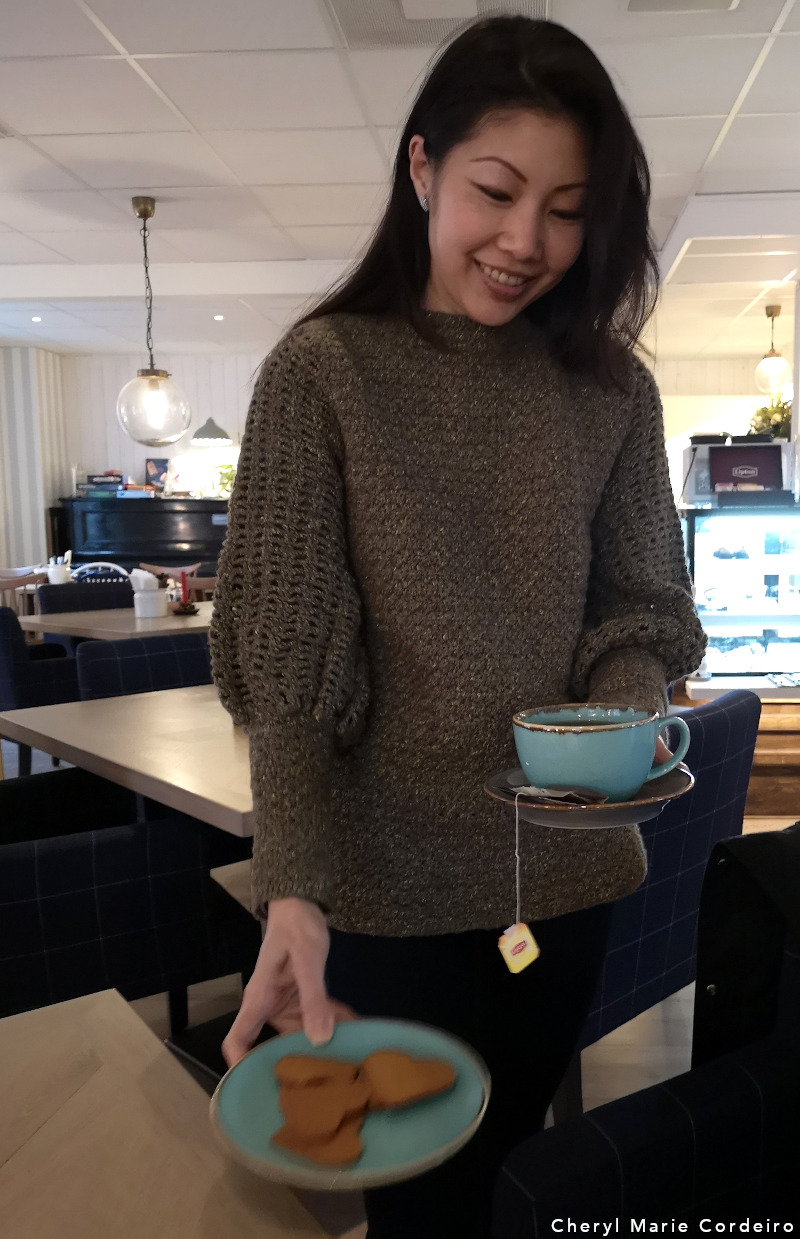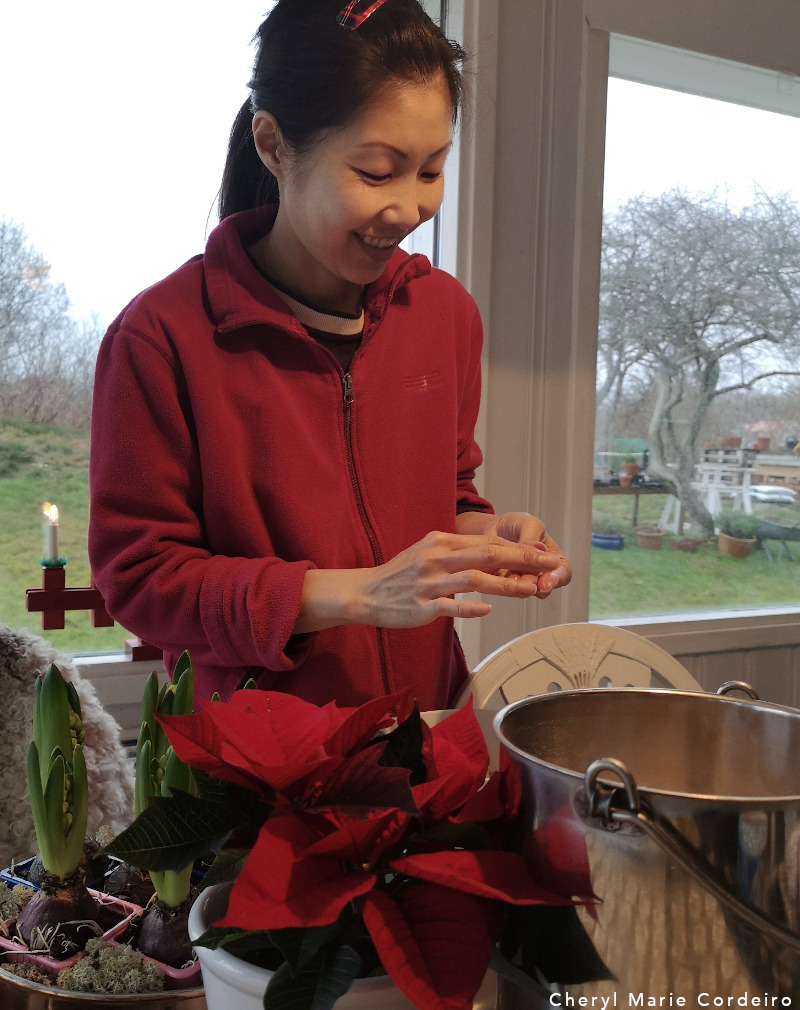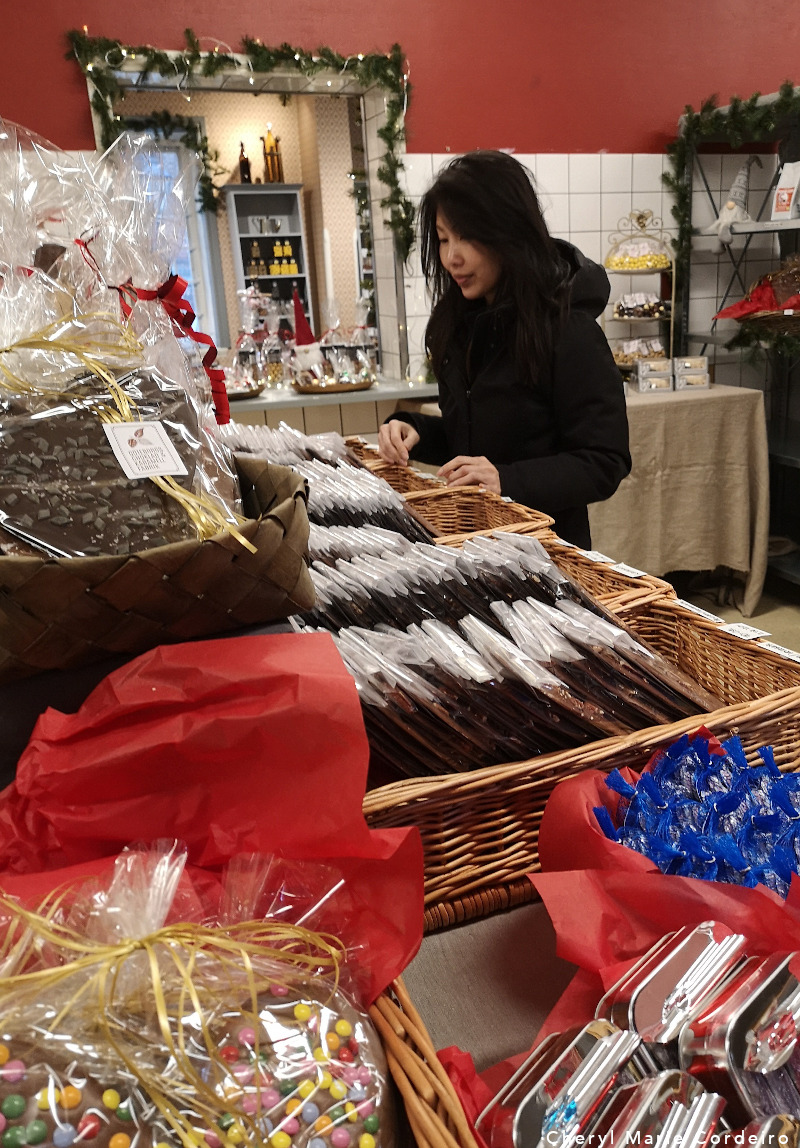A saffranssemla. Like a semla, only with saffron added, along the Swedish west coast, Sweden.
Text & Photo © CM Cordeiro & JE Nilsson 2020
I did a post-Christmas grocery store run yesterday in Sweden. To my horror, I saw trays of semlor being brought out from the bakery department. I took a double take on the trays, to see they were not actually large cream puffs, because, why not? But, there were no cream puffs. The trays were filled with luscious marzipan and cream filled semlor, headed to the bakery shelves. A lovely sight, but a little early, I thought.
